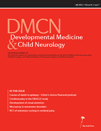
DEVELOPMENTAL MEDICINE AND CHILD NEUROLOGY
Scope & Guideline
Elevating standards in developmental medicine and child neurology.
Introduction
Aims and Scopes
- Neurodevelopmental Disorders:
The journal addresses a wide range of neurodevelopmental disorders, including cerebral palsy, autism spectrum disorders, and other conditions affecting motor and cognitive development. - Clinical Interventions and Assessments:
DMCN publishes research on various clinical interventions, assessments, and therapies aimed at improving the health and quality of life of children with disabilities. - Epidemiology and Public Health:
The journal explores epidemiological studies that provide insights into the prevalence, risk factors, and health disparities associated with neurodevelopmental disorders. - Family and Societal Impact:
Research related to the psychosocial impact of disabilities on families, including caregiver perspectives, social determinants of health, and community participation, is a significant focus. - Innovative Research Methodologies:
DMCN encourages the use of innovative methodologies such as telehealth, artificial intelligence, and machine learning in the assessment and management of developmental disorders.
Trending and Emerging
- Telehealth and Remote Interventions:
The COVID-19 pandemic has accelerated the adoption of telehealth solutions, with increasing research on effective remote interventions for children with disabilities. - Family-Centered Care Approaches:
There is a rising emphasis on family-centered care, highlighting the importance of involving families in treatment planning and decision-making processes. - Intersectionality in Disability Research:
Emerging studies are increasingly recognizing the intersectionality of disability with factors such as race, socioeconomic status, and geographic location, influencing health outcomes and access to care. - Personalized and Precision Medicine:
Research focusing on personalized treatment approaches based on genetic, environmental, and individual patient factors is gaining traction, particularly in the context of developmental and epileptic encephalopathies. - Longitudinal Studies and Lifespan Perspectives:
There is a growing trend towards longitudinal studies that track outcomes over time, emphasizing the lifelong impact of childhood disabilities and the need for continuous support.
Declining or Waning
- Traditional Pharmacological Interventions:
There has been a noticeable decrease in studies focused solely on pharmacological treatments for developmental disorders, as emphasis shifts towards behavioral and integrative interventions. - Generalized Neurodevelopmental Screening Tools:
Research on broad, non-specific neurodevelopmental screening tools appears to be declining, with a move towards more tailored and condition-specific assessments. - Single-Cause Investigations:
The journal has shifted away from studies that focus on single causative factors of developmental disorders, favoring more complex, multifactorial approaches that consider genetics, environment, and social factors.
Similar Journals
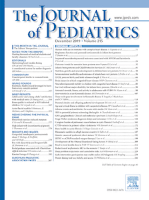
JOURNAL OF PEDIATRICS
Shaping the future of child health with innovative insights.JOURNAL OF PEDIATRICS, published by MOSBY-ELSEVIER, is a premier academic journal dedicated to advancing the field of pediatric medicine. With an impressive HIndex and a prestigious Q1 categorization in Pediatrics, Perinatology and Child Health, this journal stands as a vital resource for researchers, clinicians, and students seeking to stay at the forefront of breakthroughs in child health from 1932 to the present. The journal holds an esteemed position within the Scopus rankings, currently listed at Rank #46 out of 330 in its category, placing it in the 86th percentile. Although it does not offer open access, the journal provides invaluable insights and research findings that shape clinical practices and influence policy decisions in pediatric healthcare. With an unwavering commitment to excellence, the JOURNAL OF PEDIATRICS remains essential for those involved in the care and study of children, ensuring that the voices of leading experts are heard and disseminated within the global medical community.

PAEDIATRIE UND PAEDOLOGIE
Exploring child development with academic precision.PAEDIATRIE UND PAEDOLOGIE is a reputable journal published by SPRINGER WIEN, focusing on the field of pediatric medicine and child health. With an ISSN of 0030-9338 and an E-ISSN of 1613-7558, this journal has a rich legacy dating back to its inception in 1971, marking a considerable contribution to the academic discourse around pediatric healthcare until its coverage was discontinued in Scopus in 1997. Although it does not currently offer open access, the journal serves as a vital resource for professionals, researchers, and students dedicated to the advancement of pediatric practices and understanding of child development. The content is meticulously curated to ensure high academic standards, and though it lacks current HIndex or quartile rankings, it remains a significant reference point for those involved in pediatric research. By bridging theory and practice, PAEDIATRIE UND PAEDOLOGIE continues to be an essential platform for knowledge dissemination in the domain of pediatric health.

Clinical and Experimental Pediatrics
Championing the future of pediatrics through quality research.Clinical and Experimental Pediatrics, published by the Korean Pediatric Society, is a leading open-access journal dedicated to the ever-evolving field of pediatrics. Since its inception in 2011, this esteemed journal has carved out a significant niche in the academic community, being recognized in the top quartile (Q1) of both Pediatrics and Pediatrics, Perinatology and Child Health categories as of 2023. With its publication based in South Korea, the journal aims to disseminate high-quality research and clinical studies that drive advancements in child health and pediatric care. The impact of its contributions is evidenced by its impressive Scopus rankings, being placed first in Nursing – Pediatrics and within the top 20 in Medicine – Pediatrics, Perinatology and Child Health, thereby positioning it as a critical resource for researchers, healthcare professionals, and students alike. Offering open access since 2011, Clinical and Experimental Pediatrics is committed to ensuring that innovative and vital pediatric research reaches a global audience, promoting knowledge and collaboration across borders. For anyone invested in pediatrics, this journal is an invaluable resource that shapes the future of child health.
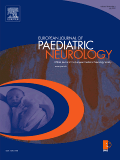
EUROPEAN JOURNAL OF PAEDIATRIC NEUROLOGY
Leading the way in pediatric neurological advancements.European Journal of Paediatric Neurology, published by Elsevier Science Ltd, is a premier academic journal dedicated to advancing the field of paediatric neurology. With its ISSN 1090-3798 and E-ISSN 1532-2130, this journal serves as a vital resource for researchers, clinicians, and students alike, focusing on the latest findings and innovative treatments in paediatric neurological disorders. The journal has established itself as a leading publication in its field, achieving a Q1 classification in Pediatrics, Perinatology and Child Health, and holding a reputable Q2 status in Clinical Neurology as of 2023. Positioned within the top 88th percentile in Pediatrics and the 76th percentile in Clinical Neurology according to Scopus ranks, it publishes rigorous peer-reviewed articles that contribute significantly to clinical practice and research. Although not open access, the journal provides vital insights into the complexities of neurological conditions affecting the pediatric population, making it an essential tool for scholars and professionals striving to improve child health outcomes. With a publication trajectory spanning from 1997 to 2024, it continues to be at the forefront of paediatric neurological research, inspiring innovation and collaboration in the scientific community.
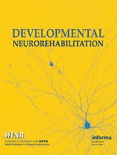
Developmental Neurorehabilitation
Empowering research in pediatric neurorehabilitation.Developmental Neurorehabilitation is an esteemed journal published by Taylor & Francis Inc, dedicated to advancing the field of developmental neuroscience and rehabilitation. With an ISSN of 1751-8423 and an E-ISSN of 1751-8431, this journal serves as a vital resource for researchers, clinicians, and students interested in innovative therapeutic approaches and rehabilitation techniques for children and adolescents. Since its inception in 1997, Developmental Neurorehabilitation has focused on disseminating high-quality research, contributing to a deeper understanding of recovery processes in developmental disorders, and facilitating interdisciplinary dialogue among professionals. With its recognition in Q2 and Q3 quartiles across prominent categories such as Pediatrics and Rehabilitation, it stands out as a pivotal publication in its field, boasting Scopus rankings that reflect its significant impact—ranked #53 in Rehabilitation and #139 in Pediatrics, among others. While maintaining a commitment to quality research, the journal does not currently offer open access but remains accessible through institutional subscriptions, further enriching the academic landscape with critical insights into rehabilitation methodologies for developmental challenges and promoting better clinical practices to improve patient outcomes.

Journal of the Korean Academy of Child and Adolescent Psychiatry
Fostering collaboration in mental health research.The Journal of the Korean Academy of Child and Adolescent Psychiatry (ISSN: 1225-729X; E-ISSN: 2233-9183) stands as a pivotal resource in the fields of child and adolescent mental health, contributing significantly to the dialogue on psychiatric practices and research in South Korea and beyond. Published by the KOREAN ACADEMY OF CHILD & ADOLESCENT PSYCHIATRY, this journal is recognized for its dedication to advancing the understanding of psychiatric disorders that affect children and adolescents, as evidenced by its Q3 ranking in both Pediatrics, Perinatology and Child Health and Psychiatry and Mental Health categories for 2023. Operated from Seoul, South Korea, the journal facilitates knowledge-sharing among researchers and practitioners, providing insights into clinical practices and innovative treatment methodologies. Although not openly accessible, the journal emphasizes quality over quantity in its selection of studies, making each article a valuable contribution to the field. As the journal continues to publish impactful research through 2024, it remains essential reading for those committed to the well-being of younger populations and their families.
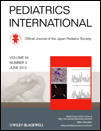
PEDIATRICS INTERNATIONAL
Elevating standards in pediatric research and practice.Pediatrics International, published by Wiley, is a distinguished journal focusing on the fields of Pediatrics, Perinatology, and Child Health. With an ISSN of 1328-8067 and an E-ISSN of 1442-200X, it has made significant contributions to the understanding of pediatric health since its inception, maintaining a longstanding commitment to high-quality research from 1958 through to the present day. The journal falls within the Q3 category of the ranking system for its field and currently holds a Scopus rank of #184 out of 330, placing it in the 44th percentile of pediatric literature, thereby underlining its relevance in contemporary pediatric research. It aims to disseminate critical insights on child health, promote evidence-based practices, and foster collaborations among healthcare professionals. Researchers and practitioners in the field are encouraged to explore the wealth of resources available through open access options for enhanced reach and impact.

Pediatric Investigation
Dedicated to enhancing children's health through impactful research.Pediatric Investigation, published by WILEY, is an esteemed open-access journal dedicated to advancing the field of pediatrics, perinatology, and child health since its establishment in 2017. With an ISSN of 2096-3726 and E-ISSN of 2574-2272, this journal aims to disseminate high-quality research and innovative practices that address critical issues affecting children's health and well-being. Notably, it has achieved a commendable Q2 ranking in the 2023 category of Pediatrics, Perinatology and Child Health, with a Scopus rank of #124 out of 330, positioning it in the 62nd percentile—a testament to its growing impact in the academic community. With a commitment to open access, Pediatric Investigation ensures that researchers, healthcare professionals, and students can freely access cutting-edge studies, fostering collaboration and knowledge sharing in the global pursuit of pediatric excellence. The journal is located at 111 River St, Hoboken 07030-5774, NJ, USA, reflecting its central role in the United States' research landscape.

CHILD PSYCHIATRY & HUMAN DEVELOPMENT
Pioneering Research in Child Psychiatry and DevelopmentCHILD PSYCHIATRY & HUMAN DEVELOPMENT, published by Springer, stands at the forefront of research in the fields of developmental and educational psychology, pediatrics, perinatology, and child psychiatry. With an ISSN of 0009-398X and an E-ISSN of 1573-3327, this esteemed journal has been a vital resource for academics since its inception in 1970. Currently ranked in the Q1 category across its multiple relevant disciplines, it illustrates a significant impact with its Scopus rankings, placing it within the top 13% for pediatrics and child health and the top 18% for developmental psychology. Its comprehensive scope ensures that leading-edge studies, reviews, and discourse are accessible, contributing greatly to the understanding of mental health and developmental processes in children. With no open access option, the journal maintains a commitment to high-quality, peer-reviewed content that is invaluable for researchers, healthcare professionals, and students alike, as they strive to advance their knowledge and practices in child psychology and human development.
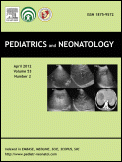
Pediatrics and Neonatology
Delivering high-quality research for the future of child health.Pediatrics and Neonatology is a premier open access journal published by Elsevier Taiwan, dedicated to advancing the field of child health and neonatal care. With an ISSN of 1875-9572 and an E-ISSN of 2212-1692, this journal has established itself as a notable resource for researchers, healthcare professionals, and students alike. Since its inception in 2008, it aims to share high-quality, peer-reviewed articles that cover a spectrum of topics within pediatrics, perinatology, and neonatal medicine. As of 2023, the journal holds a respectable Q2 category ranking in the field, with a Scopus rank of #136 out of 330, showcasing its relevance and contribution to the scientific community. Published in Singapore, this journal not only facilitates knowledge dissemination but also promotes collaborative research critical for improving child health outcomes globally. With open access options, the journal ensures that crucial findings are accessible to all stakeholders, enhancing the discourse in pediatric and neonatal research.